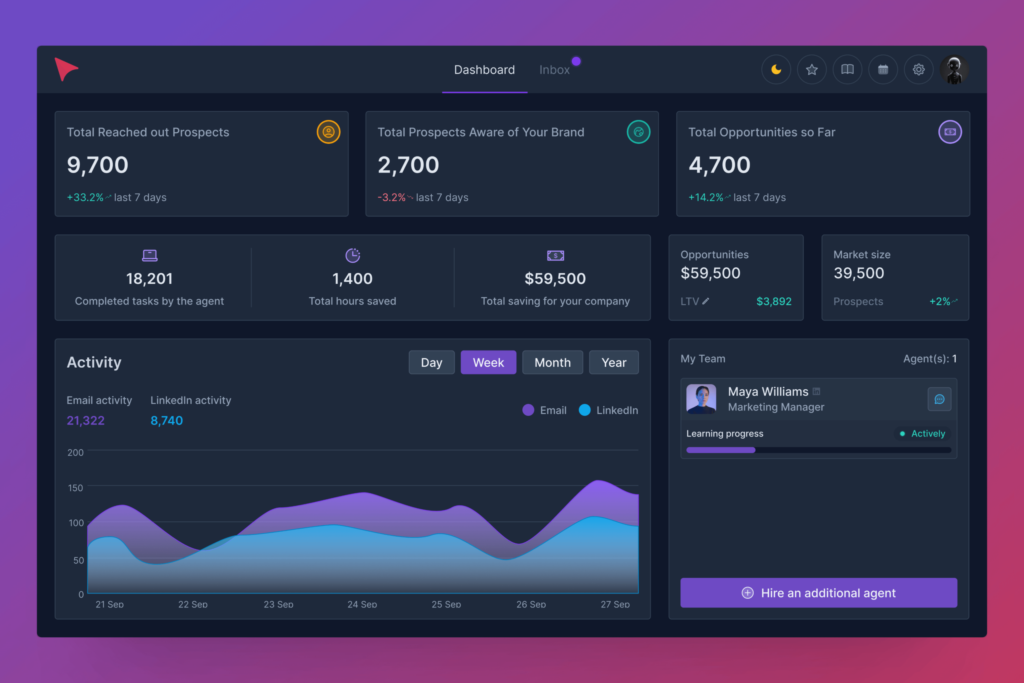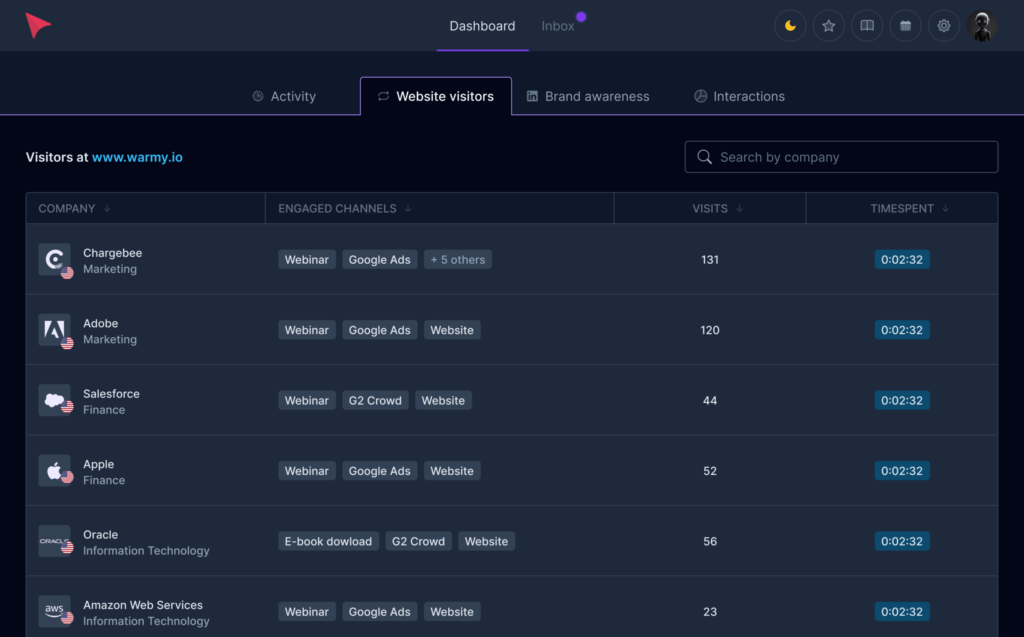Content marketing is a highly effective strategy in the dynamic digital market for businesses seeking to attract potential customers and convert them into leads and, ultimately, generate sales. It involves creating and disseminating valuable, pertinent, and consistent content to a carefully identified audience, with the aim of driving profitable customer action.
In addition, content marketing is more than about visibility; it is about a connection that nourishes the prospect through the sales funnel until they develop a high degree of customer preference and loyalty.
The fact that AI optimizes data analysis, trend forecasting, and content development allows marketers to tailor their content to the needs of the target audience in new, much more advanced ways. This article will offer in-depth insights into nuances related to content marketing for lead generation, exemplified by the incorporation of state-of-the-art technology to your overall lead generation methodology.
Understanding Lead Generation Through Content Marketing
For a business growth strategy, lead generation is a critical part which is primarily attracting and converting strangers and prospects into someone who has indicated interest in your company’s product or service. In the language of content marketing, lead generation is, at its core, about using content to capture your audience’s attention and then engage them enough with valuable information that they’re willing to take enough of a risk to exchange their contact information for it. Usually, it is done in the form of a sales established call.
How Content Marketing Facilitates the Lead Generation Process
- Finding the Correct Audience. Content that answers the particular queries and demands of a target market draws in prospective customers who are interested in your goods or services.
- Nurturing Prospects. By guiding prospective leads through the sales funnel with interactive and instructional content, content marketing creates and preserves relationships.
- Building Authority and Trust. Companies can gain credibility and position themselves as leaders in their area by regularly producing high-quality content. This helps build trust with potential customers.
- Encouraging Conversion. Calls-to-action strategically placed throughout material direct readers toward engagement actions, such as downloading a whitepaper or attending a webinar, thus turning them into leads.
- Measuring and Improving Strategies. material marketing analytics assist companies in assessing their efficacy, improving their plans, and enhancing their upcoming material to better satisfy customers.
Mechanism of Content Marketing for Lead Generation
The purpose of content marketing is to attract, develop and convert prospects with the help of content based on the various stages of the buying process. In other words, at the top of the funnel, at the point of seduction, we find high-quality, engaging content which invariably include a blog post, video, or an infographic on impactful, relevant topics to our industry that has gain potential interest.
Further down the funnel, in maintaining the connections with the customer one is nourishing with different content such as an ebook, manual, and case-studies. When consumers get broken down with the help of the content that is provided, a bond of trust is built between the customer and the brand since one is now the expert.
Prior to starting work, content contains strategic calls-to-action throughout the text. After reading the report, a white paper, or any other relevant material, users are prompted to join an email list, attend an event, or even request the service explained. This is one way to convert them into leads so that they can later be nurtured.
The Role of Different Types of Content in the Lead Generation Funnel
1. Stage of Awareness. The information is meant to entice and educate readers at the top of the funnel. This comprises:
- Blog Posts. Grab potential leads’ attention by providing a wide introduction to issues and solutions.
- Infographics and brief videos. Provide succinct, captivating perspectives on pertinent subjects to pique curiosity.
2. Stage of Consideration. Content gets more individualized and detailed as prospects proceed down the funnel:
- Podcasts and Webinars. In-depth conversations on interesting subjects can be given to demonstrate competence and foster stronger relationships.
- Newsletters. Providing insightful material that speaks to the needs and interests of prospects, these updates help keep your brand at the forefront of their minds.
3. Decision Stage. This section’s content aims to turn visitors into leads and paying customers.
- Testimonials and Case Studies. Emphasize customer satisfaction and the efficiency of your goods or services while allaying any worries that potential customers might have.
- Free Demos and Trials. Give potential customers a hands-on experience with your goods to ease their choice to buy and encourage confidence.
Producers of Content Marketing
Who is Responsible for Creating Content?
- Marketers. Plan ahead and supervise the production and dissemination of content. They make sure that every component is in line with the target demographic and the larger marketing objectives.
- Content Creators. Those in charge of producing the actual material are writers, graphic designers, producers of videos, and podcasters. Their technical proficiency and storytelling expertise are essential for creating messages that connect with audiences.
- AI Tools. To create data-driven content, improve customization, and optimize content for search engines, artificial intelligence is being utilized more and more in content marketing. AI may help with early content drafts, content subject suggestions based on data trends, and even fine-tuning language for improved user engagement.
Skills and Tools Needed to Excel in Content Creation for Lead Generation
- SEO expertise. To guarantee that material reaches its target audience, it is essential to understand how to optimize it for search engines.
- Analytical Skills. Capability to analyze data to determine the most effective content types and ways to raise engagement.
- Creativity and Storytelling. It’s essential to tell engrossing, captivating stories that can hold an audience.
- Writing material that can encourage readers to execute a desired action, like completing a form or downloading a resource, is known as persuasive writing.
Tools
- Content Management Systems (CMS), which are websites like WordPress or HubSpot.
SEO Tools. Programs that assist with keyword research, competition analysis, and tracking - SEO performance, such as Ahrefs, SEMrush, or Moz.
- Analytics Tools. Google Analytics and other comparable programs to monitor audience behavior, assess the impact of content, and measure engagement.
- Software for graphic design. To create visually appealing images and movies, use programs like Canva or Adobe Creative Suite.
- AI writing assistants include programs like Grammarly for content editing and AI-powered tools like Jasper for idea generation and even content drafting.
The Need for a Content Marketing Strategy in Lead Generation
Statistical Evidence Supporting the Effectiveness of Content Marketing in Generating Leads
The Content Marketing Institute claims that content marketing costs 62% less and produces nearly three times as many leads as outbound marketing.
According to HubSpot, 70% of marketers regularly invest in content marketing, and the majority of businesses consider it to be an essential component of their lead-generation strategy.
According to a Demand Metric study, content marketing is six times more effective at converting leads than other marketing strategies. This highlights the effectiveness of content marketing in lead nurturing.
Case Studies or Success Stories Highlighting Significant ROI from Content Marketing
1. HubSpot
HubSpot, a leader in inbound marketing, successfully leveraged content marketing to boost lead generation . The company attracted potential customers with free content — ebooks, blogs, webinars, etc. — to help them move through the buyer’s journey stages. The company also utilizes long-form guides, reports, and more to showcase their expertise and win the trust of customers. Overall, this approach enhanced lead generation significantly. For example, their “The State of Marketing” report yields at least several thousand new leads every year. To access the free report, an interested person must provide contact details.
2. Microsoft
The tale of Microsoft’s use of content marketing to improve lead generation centers on the variety of blogs it offers to reach a range of target categories, including regular users and IT experts. Every blog is customized to cater to the interests and issues of its particular readership, increasing interaction and generating leads with carefully thought-out and extremely focused material.
3. Salesforce
Content marketing has been successfully used by Salesforce to showcase the possibilities of CRM systems . By sharing client success stories and testimonials, Salesforce not only offers proof of the efficiency of its solutions but also creates engagement and leads. For instance, detailing how Salesforce helped Spotify or Amazon Web Services demonstrates that they work with large and successful enterprises – a powerful source of leads.
Challenges in Content Marketing for Lead Generation
Content Saturation
One of the biggest problems in today’s digital environment is the sheer volume of content being churned out. Because there is so much content available, it is becoming more difficult for businesses to distinguish themselves from their competitors. Since there may be so many possibilities available, it is becoming harder for any single piece of material to capture the target audience’s imagination and interact. And people, being easily distracted, might just as easily shift away to another website. It can be difficult to establish oneself in the market without a distinct and distinct voice.
Maintaining Quality
Another bottleneck is quality. Making top-notch content takes a lot of time, money, and effort. A great deal of time and energy goes into creating top-notch content, and material marketing is no exception. It becomes even more important to maintain a high level of quality when a firm decides to produce even more of it. Businesses may feel tempted to let quality slip as they rush out fresh publications, but doing so can damage a brand and lead generation. The brand should always be maintained at the highest level of quality.
SEO Ranking
A content marketer’s nightmare is writing high-quality copy that no one reads. To have any chance of success, material marketing must be search engine optimized to channel buyers to a website . This is essential for lead generation. It has become increasingly difficult to maintain high SEO ranks or succeed thanks to constantly changing algorithms that catch marketers off guard. Understanding SEO best practices and applying them to content demands time and learning.
Aligning Content with Audience Needs
It’s critical to create content that appeals to your target audience rather than the target audience consuming your content no matter how well-crafted it is. Making judgments before determining what the target audience wants to know about the firm’s products or services is detrimental.
Measuring ROI
It can be challenging for a lot of marketers to measure and will remain so as long as the buyer journey enables various touchpoints to influence potential leads. Thus, measuring the direct influence on lead generation and revenue is nearly impossible due to lengthy buyer journeys.
Adapting to Technological Changes
The ever-changing nature of content consumption due to the rapid advancement of technology has an impact on content marketing (e.g., the advent of mobile browsing, voice search). Remaining up to speed with these trends and modifying content tactics appropriately calls for flexibility and continuous education.
Step-by-Step Guide to Generating Content for Lead Generation
1. Extensive Market Research
At the heart of a truly effective content marketing strategy lies extensive market research. You need to know everything about who your customers are – what they need, what challenges they face, and what solutions they are looking for. All your efforts to create content afterwards should rely on this knowledge to be not just relevant but also highly targeted.
Firstly, find out who your audience is and who you want it to be. Collect demographic data: age, gender, location, level of education. Study their online behavior and interaction frequency, preferences, and tools and ways to acquire this information, like Google Analytics or insights from social media pages and specialized market research software. Also, consider running surveys and focus groups to get direct feedback from your customers on what they value.
You might want to use the data you have on the customers from your CRM and analytics tools to create an initial audience profile. However, talking to the audience, whether through social media, community forums, or other means, can complement numerical data with insightful qualitative information. Meanwhile, you should always monitor competitors for information on what the market expects from you and what content aspects have yet to be covered.
According to a HubSpot survey, 55% of marketers are concerned with blog content creation more than anything else when it comes to inbound marketing . It means that you can only align your content with the audience by conducting an extensive market research effort.
2. Creating Compelling Lead Magnets
Lead magnets are among the most important instruments in content marketing that exist to attract promising leads. They work by rewarding users with something valuable in return for their personal information.
Start by determining what questions or needs are most significant to your ideal customer. It refers back to your market research. Then, decide which type of lead magnet would be most attractive to the client – an eBook, whitepaper, a template, or a detailed report on your industry. Finally, create compelling content that’s informational, but most importantly directly related to your audience’s interests or issues.
In addition, it is important to understand that the effectiveness of your work is also influenced by the design of the lead magnet. Use professional layouts and attractive graphics to make your content as attractive as possible. Once your lead magnet is ready, spread the information on it wisely through your web resource, social platforms, and email newsletters.
The Content Marketing Institute reports that 65% of B2B marketers leverage eBooks or white papers among their content marketing initiatives to create leads.
3. Blogging
A blog is a means to establish authority and credibility in the eyes of the audience. Additionally, a high-quality blog may serve as a continuous source of relevant data. Finally, regularly creating high-quality, search engine-optimized content aids a website in ranking higher in Google search results. That is why regular blogging helps drive more traffic to the site and makes it easier to discover on Google.
The following aspects should be considered by a beginner: setting clear goals, researching what readers care about and what problems they want to solve, and coming up with post ideas focused on the interests of the targeted readers and the industry.
Here is a shocking fact from HubSpot: organizations that blog on a regular basis generate 55 percent more web traffic than those that do not.
4. Guest Blogging
Another efficient form of content marketing for those aiming to grow beyond their current reach is guest blogging. This involves creating content that is posted on other blogs in the same or related areas of business to expand the audience scope. This has the advantage of enabling one to borrow established audiences to increase the reach of your brand. It gives your blog additional publicity and a sense of respectability by generating high-quality backlinks.
Find and research high-traffic niche blogs that align with your target audience, also known as well-established online business publications. Make initial contact by submitting a personalized application with a proposal for collaboration and the ability to demonstrate your business experience.
Social Media Today studied bloggers’ popularity and found that 60% wrote between 1-5 guest articles each month. From this statistic, it is clear that bloggers prefer guest blogging because they are certain that it will benefit their exposure, professional relationships and elevate website traffic and SEO.
5. Quizzes and Surveys

Quizzes and surveys are among the most fun and interactive interactive content marketing tools, which can give an outstanding boost to user engagement. As an author of their questions, you can always tailor them to your needs and make the overall user experience more satisfying. Furthermore, by promoting quizzes and surveys, you can obtain accurate information about your audience that is key to refining your content and marketing strategies.
Make sure your surveys and quizzes are very appealing, engaging, and responsive to the concerns and wants of your target audience, as mentioned earlier. Choose from basic multiple-choice questions to more complex questionnaires depending on the depth of the data you need. Moreover, you should be able to easily access and easily disseminate these devices across different platforms to maximize participation. Select relevant data from your inquiries to understand your audience better and improve future efforts.
According to stats compiled by data trading platform BuzzSumo, quizzes are widely distributed, averaging 1,900 shares. Quizzes and surveys encourage your visitors to engage and interact, and it is perfect for any content marketing strategy that can be a big part.
6. Webinars and Podcasts
Webinars and podcasts are multimedia sites that help you engage your audience even more deeply through real-time interaction and information exchange. As a platform operator, you have the opportunity to showcase expertise and thoughtful insights on important themes inside the industry that promotes confidence in your brand and establishes it as an authority. After that, these sites may gather leads: all participants register utilizing their email address and consent to be contacted later with additional information.
Choose a subject for your webinar and podcast that you think your target audience will want to view and present information . Both options encourage you to pre-record them so you may make any changes before going live. Additionally, you may invite a guest professional to broadcast part of the event for the viewers. Finally, you will promote the occasion on your website, email marketing, and social media to increase attendance by collecting participant data, such as an email, to create your list.
According to the Content Marketing Institute, to name just one example, more than half of 60% of respondents consider the content in a webinar to be the most effective at influencing their choice of B2B marketers.
7. Long-Tail SEO
Long-tail SEO involves optimizing content for search queries that are less competitive and more specific compared to regular keywords. Usually, long-tail keywords are longer and more detailed and often include the user’s long-term intent, performance, and purchase. As such, long-tail keywords enable businesses to target users closer to the end of the purchasing process, making them likely to purchase. As a result, integrating such keywords into the content enables businesses to make content more visible and accessible to searchers who are more likely to read the content actively.
Additionally, businesses must conduct extensive keyword research to identify long-tail keywords that are relevant to the products and services. Upon identification, businesses should use the terms naturally in articles, blog posts, and other content. Secondly, businesses must create informative content that addresses the keywords’ unique topics and queries.
Moz estimated that websites’ ranking was optimized for long-tail keywords, attracting 70% of audiences to search traffic. Therefore, businesses utilizing long-tail keywords can become successful in improving the volume of traffic visiting their websites while converting them into leads and buyers especially.
8. High-Quality Content on Social Media and YouTube
It is also relevant to post your high-quality content on social media platforms and YouTube, where a vast number of potential audiences spend most of their time. This method promotes the viewer to engage by sharing various types of content, including short videos, posts, and updates. The content you share should be specifically suitable for each platform based on user cases and their preferences.
Examples of content are a catchy video on Instagram, a thoughtful article on Facebook, a quick post on Twitter, and a longer video on YouTube. Importantly, the content must reflect your business’ voice, be high-quality, and contain clear call-to-actions that promote your site’s visit to its user.
Social media platforms have undergone mass adoption, more than 50% of the world’s population engaged in it, with an average daily engagement of 2 hours 24 minutes per person.
The Role of AI in Content Creation
Artificial Intelligence has brought technological advancements to content creation, transforming the tedious process of content creation to a relatively easier one. Through artificial intelligence, a more straightforward and require manner of drafting content is supported and put into the light.
Artificial Intelligence has automated content generation significantly, including s the rapid drafting of initial drafts or even the complete generation of some content such as news and social media post. This, in turn, leads to a speed rate in creating content and maintaining a stable creation rate.
The AI in production supported SEO optimization which is the use of AI tools to analyze vast amounts of data, predict trends and suggest more optimal changes that visibility on search engines. Another task includes analytics, where a bulk amount of data is subjected to processing, tracking engagement and behavior from use, and predicting content trends, benefiting the marketers to discover it gets to the book.
Examples of AI-Driven Content Marketing Tools
Artificial intelligence (AI) is used by programs like Grammarly and Hemingway Editor to enhance writing by assuring readability, recommending style changes, and verifying grammar, all of which increase the effectiveness and engagement of the content.
Machine learning is used by HubSpot’s Content Strategy Tool to assist marketers in identifying and validating content themes and concepts that effectively connect with their target audience.
As an AI-powered research assistant, MarketMuse proposes subjects, fills in content gaps, and creates detailed coverage designs.
Another AI tool, Crayon, keeps an eye on competitor website modifications and marketing campaigns, giving firms the information they need to adapt their content strategies to changing market conditions.
AnyBiz as a Premier Lead Generation Solution

AnyBiz is revolutionizing the lead generation landscape, expanding its capabilities beyond expectations of traditional tools. As the ultimate solution aiding businesses in optimizing their lead generation efforts, this platform introduces state-of-the-art artificial intelligence to automate and personalize the lead generation and sales process entirely.
Essentially, AnyBiz’s AI-powered sales agents reach out to the potential customers through personalized multi-channel communication. The key to the success of personalized outreach is that the AI develops its messages based on the target’s most recent online behaviors and most focused interests.
Naturally, human performance cannot be compared to this aspect – each customer receives the message specifically designed to him or her – meaning it is unique, relevant, personalized, and, therefore, more engaging and likely to convert. Hence, this platform does not automate the work – it revolutionizes the way businesses talk to their potential customers. By assessing more than 10,000 data points per hour, AnyBiz analyzes and adapts the messages to improve their efficiency and results.
Key features of AnyBiz

- Automated meeting scheduling. Simplifying the procedure to guarantee that human involvement is only necessary during the most crucial stages, which are the actual sales meetings.
- Smart Decision Making. By automating decision-making processes using billions of data points, one can concentrate efforts on closing transactions rather than menial administrative duties.
- Multi-Language Outreach. Increasing the reach of advertisements by conversing with potential clients in more than 30 languages, which is perfect for international business.
- Multi-Channel Engagement. Using Twitter, LinkedIn, email, and other media to increase engagement rates and cultivate relationships.
Automated Email - Classification and Response. Organize incoming emails into appropriate groups and reply to them automatically to save time and minimize manual labor.
Moreover, AnyBiz’s features to operate LinkedIn accounts and establish targeted outreach could theoretically be even more profitable for both inbound and outbound marketing. In other words, when a visitor from a recognizable business like Apple Inc. views your site through AnyBiz, it can get in touch with officially designed personalized emails.
Thus, the line between content marketing and immediate sales contact merge. Ultimately, AnyBiz combines, integrates, and secures lead generation from a new perspective, connecting content strategy with automation and AI-driven scope.
It does not only simplify the process but also integrates it naturally, making it a preferable option for any business seeking to advance sales operation.
Conclusion
In conclusion, content marketing is fundamental in the process of lead generation as it provides businesses with the effective tools to make their audience interested and engaged with the content they produce. Given the rapid development of technology, it is possible to use AI to make lead generation more efficient, engaging, and automated on all levels. Therefore, companies should implement this change to remain competitive and efficient.
The offered AnyBiz may become a top solution in this area. The ability to automate and personalize at scale makes AnyBiz the leading tool in the sphere of lead generation. Undoubtedly, companies should adopt this approach as it is necessary to catch up and keep the pace in their market branches. Do not miss the opportunity to make your lead generation better – explore AnyBiz!
Related article:


